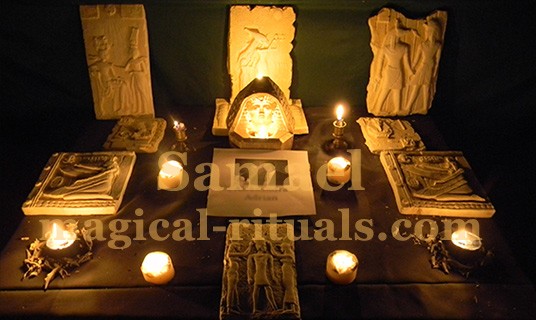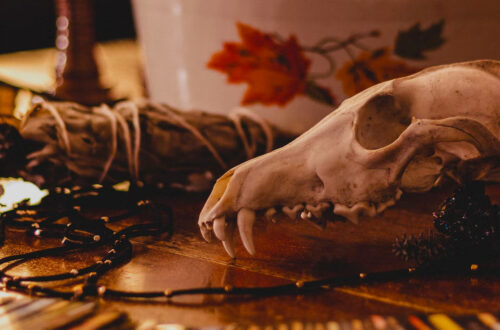
6 facts about Egyptian love magic
Egyptian civilization has left an indelible mark on human history, known for its rich culture, impressive architecture, and unique belief systems. Among its many fascinating aspects, Egyptian love magic stands out as a captivating subject. Love magic, often referred to as “erotic” or “amatory” magic, was a significant part of ancient Egyptian culture and played a central role in their quest for romance and passion. In this article, we explore six intriguing facts about Egyptian love magic, shedding light on the ancient practices and beliefs surrounding matters of the heart.
1. The power of hieroglyphs
Hieroglyphs, the iconic Egyptian script, were considered a potent medium for love magic. Priests, scribes, and skilled individuals could inscribe love spells on papyrus or other materials using these sacred symbols. The belief was that by invoking specific deities and spirits, they could channel their divine energy to influence love and relationships. Hieroglyphs held the power to draw lovers closer, create romantic bonds, and even bind individuals together through enchantments.
2. Invocation of deities
Ancient Egyptians had a rich pantheon of gods and goddesses, each associated with various aspects of life, including love and desire. Love magic often involved invoking deities like Hathor, the goddess of love and beauty, or Bes, the deity known for his protective and erotic nature. Spells would be dedicated to these deities, asking for their blessings and assistance in matters of the heart. Offerings and rituals were performed to gain favor and strengthen the connection with these divine beings.
3. Spells and potions
Love magic in ancient Egypt encompassed a wide range of spells and potions, carefully crafted to enhance desire, attraction, and affection between individuals. The methods varied, from simple spoken incantations to more elaborate rituals involving intricate ingredients. These might include exotic plants, animal parts, minerals, and even specific colors. Love potions, believed to awaken romantic feelings or increase a person’s attractiveness, were administered to the target either orally or through touch.
4. The role of amulets
Amulets held significant importance in Egyptian love magic. These small charms were often shaped like animals, hearts, or even genitalia, symbolizing fertility and desire. Amulets were believed to protect the wearer from negative energies and attract love and passion into their lives. They were also employed in rituals to enhance the efficacy of love spells. Examples of popular love amulets include the Eye of Horus, the Ankh, and the Djed pillar.
5. Love magic in daily life
Love magic was not solely confined to the realm of temples and rituals but was also an integral part of everyday life in ancient Egypt. It was accessible to all social classes, with ordinary individuals seeking guidance and assistance from local practitioners and wise men. Love spells and charms were used to attract new partners, ensure marital fidelity, and rekindle fading relationships. These magical practices served as a complementary approach to the practical aspects of relationships, reinforcing the belief that love and passion were essential for a fulfilling life.
6. Rituals for reconciliation and healing
Apart from its role in creating and enhancing romantic connections, Egyptian love magic also played a vital role in healing broken relationships and reconciling estranged lovers. Priests and magicians would perform elaborate rituals involving prayers, offerings, and symbolic acts to mend the hearts of those who had fallen out of love or had faced hardships in their relationships. The objective was to restore harmony and balance, drawing upon the benevolence of the deities to bless the troubled union.
Conclusion
The study of Egyptian love magic provides a captivating glimpse into the beliefs and practices of one of the world’s most influential civilizations. Love magic in ancient Egypt was a multifaceted system of rituals, spells, and potions, interwoven with their religious and cultural tapestry. It served as a means to explore and channel the powerful emotions of love and desire, bringing people closer together and enriching their lives with romance and passion. Though millennia have passed since these practices were commonplace, the allure of Egyptian love magic continues to captivate the imagination of contemporary minds, leaving a lasting legacy of mystery and fascination.
An example of an Egyptian love spell using amulets
In the mystical realm of ancient Egypt, the pursuit of love and passion held immense significance. Love spells and enchantments were an integral part of their culture, with people seeking divine assistance to attract love, enhance relationships, and ignite romantic flames. One popular method to harness the powers of love magic was through the use of amulets. These small, potent charms were believed to possess the ability to influence emotions and desires, connecting individuals with the blessings of the gods. In this article, we explore an example of an Egyptian love spell that utilizes amulets to invoke the magic of love and affection.
The power of amulets in ancient egypt
Amulets, revered for their protective properties, were not just symbols of good luck; they were also potent tools in the hands of skilled magicians and priests. Egyptians believed that specific amulets could harness the favor of gods associated with love, fertility, and desire, thereby enhancing the prospects of finding true love or strengthening existing relationships. Amulets were often crafted in various forms, each representing different deities or aspects of love.
Step 1: Preparing the ritual space
To commence the love spell, the practitioner would choose a sacred and secluded location. Temples or spaces dedicated to deities of love, such as Hathor or Isis, were commonly used for these rituals. The setting would be adorned with incense, candles, and other offerings, creating an atmosphere charged with divine energies.
Step 2: Selecting the amulets
The choice of amulets was crucial, as each carried specific attributes aligned with the desired outcomes of the spell. For a love spell, amulets representing love, desire, and devotion were chosen. Examples included:
- The Ankh: A symbol of eternal life, the ankh was associated with everlasting love and union between two souls.
- The Heart: A representation of love and passion, the heart amulet aimed to ignite strong emotions and attraction.
- The Ib (Heart and Feather): Symbolizing the heart being weighed against the feather of Ma’at, it ensured the sincerity and purity of love.
- The Bes Amulet: Shaped like the deity Bes, it represented protection, fertility, and amorous pleasures.
Step 3: Invoking the deities
Before activating the amulets’ power, the practitioner would invoke the deities associated with love and desire. Offerings of flowers, incense, and food were presented as a gesture of respect and devotion. The practitioner would then recite incantations and prayers, calling upon the gods to bless the amulets and grant their assistance in matters of the heart.
Step 4: Charging the amulets
The amulets’ potency was believed to intensify when charged with magical energy during the ritual. The practitioner would hold each amulet close to their heart, visualizing their deepest desires for love and affection. By channeling their emotions and intentions, they imbued the amulets with their personal energy, turning them into powerful conduits for love magic.
Step 5: Placing the amulets
Once charged, the amulets were carefully arranged and placed in a special container, such as a small pouch or box. This container served as a portable charm to carry the magic with the individual, infusing their aura with the energy of love and attraction.
Step 6: Carrying the love magic
The recipient of the love spell would carry the amulets with them, ideally close to their heart or in a personal item like a necklace or bracelet. The enchantment worked on multiple levels—first, by connecting the individual with the divine energies of love, and second, by serving as a constant reminder of their intentions and desires.
Conclusion
In ancient Egypt, love spells were regarded as a sacred art, tapping into the mystical forces of the gods to influence matters of the heart. Amulets, with their symbolic significance and protective qualities, played a crucial role in channeling these energies. The use of amulets in Egyptian love spells exemplified the belief in a universe woven together by the threads of magic, where the power of love and desire could be harnessed and manifested through sacred rituals. Though centuries have passed, the allure of Egyptian love magic and the enchanting influence of amulets on matters of the heart continue to inspire fascination and wonder in the modern world.




